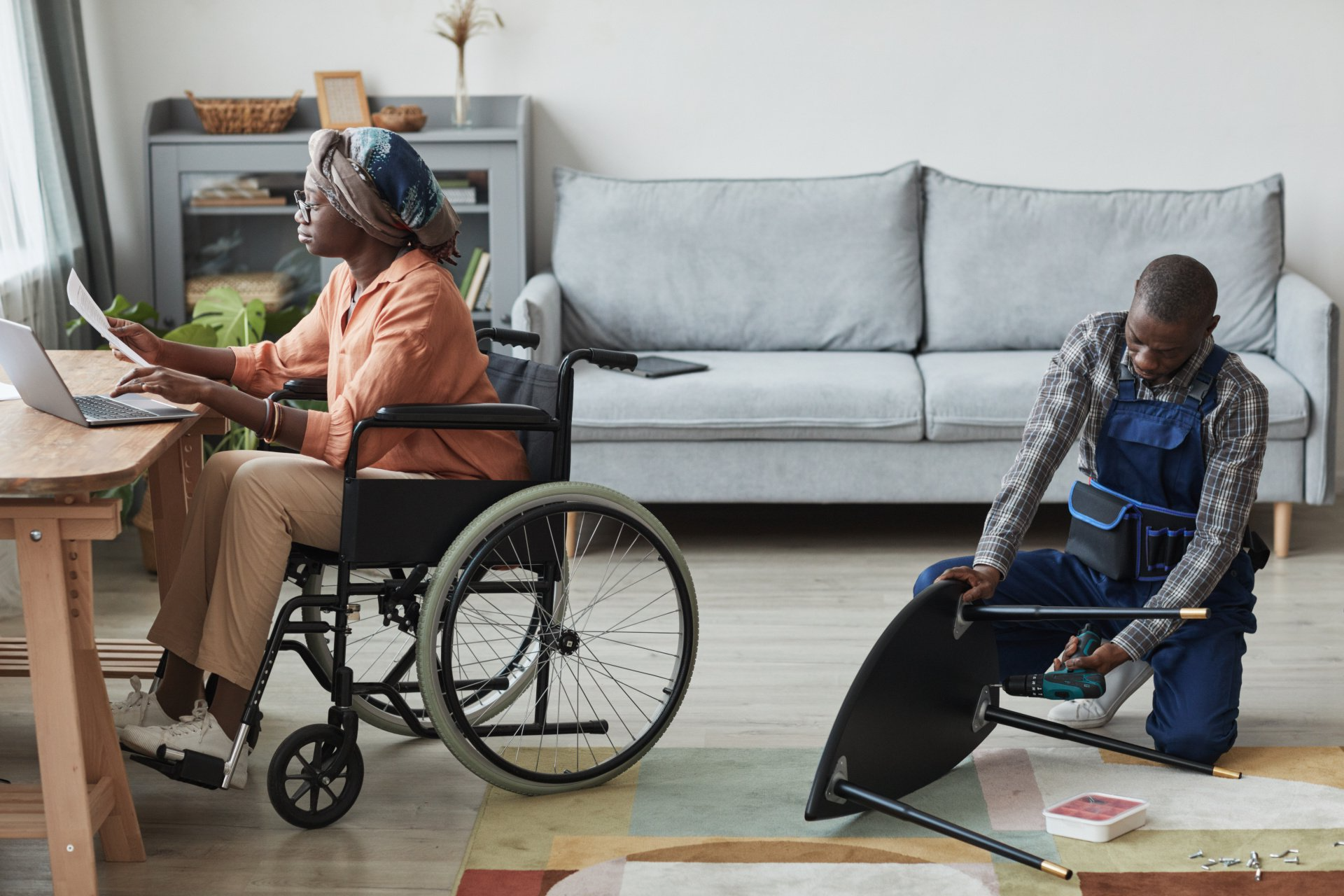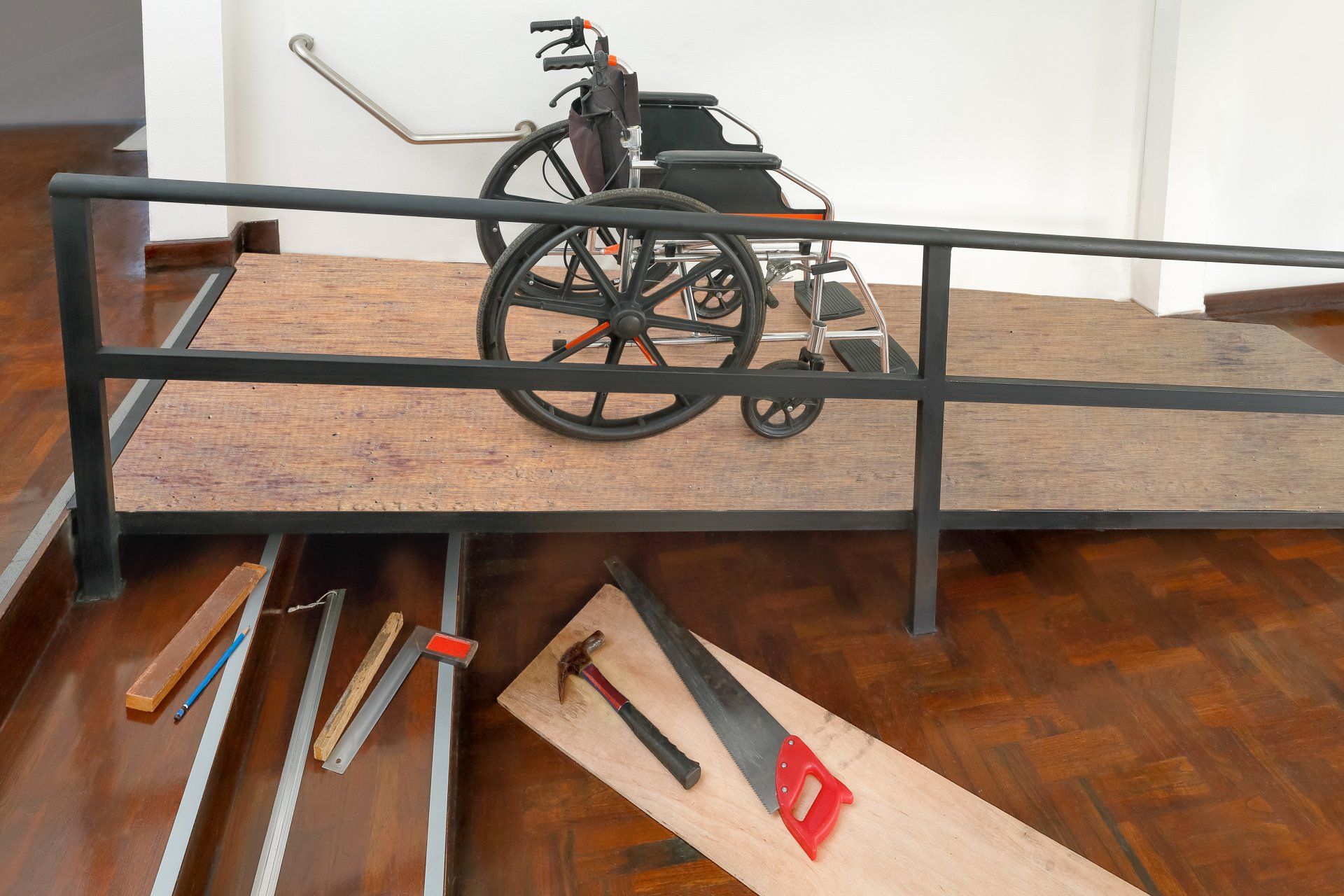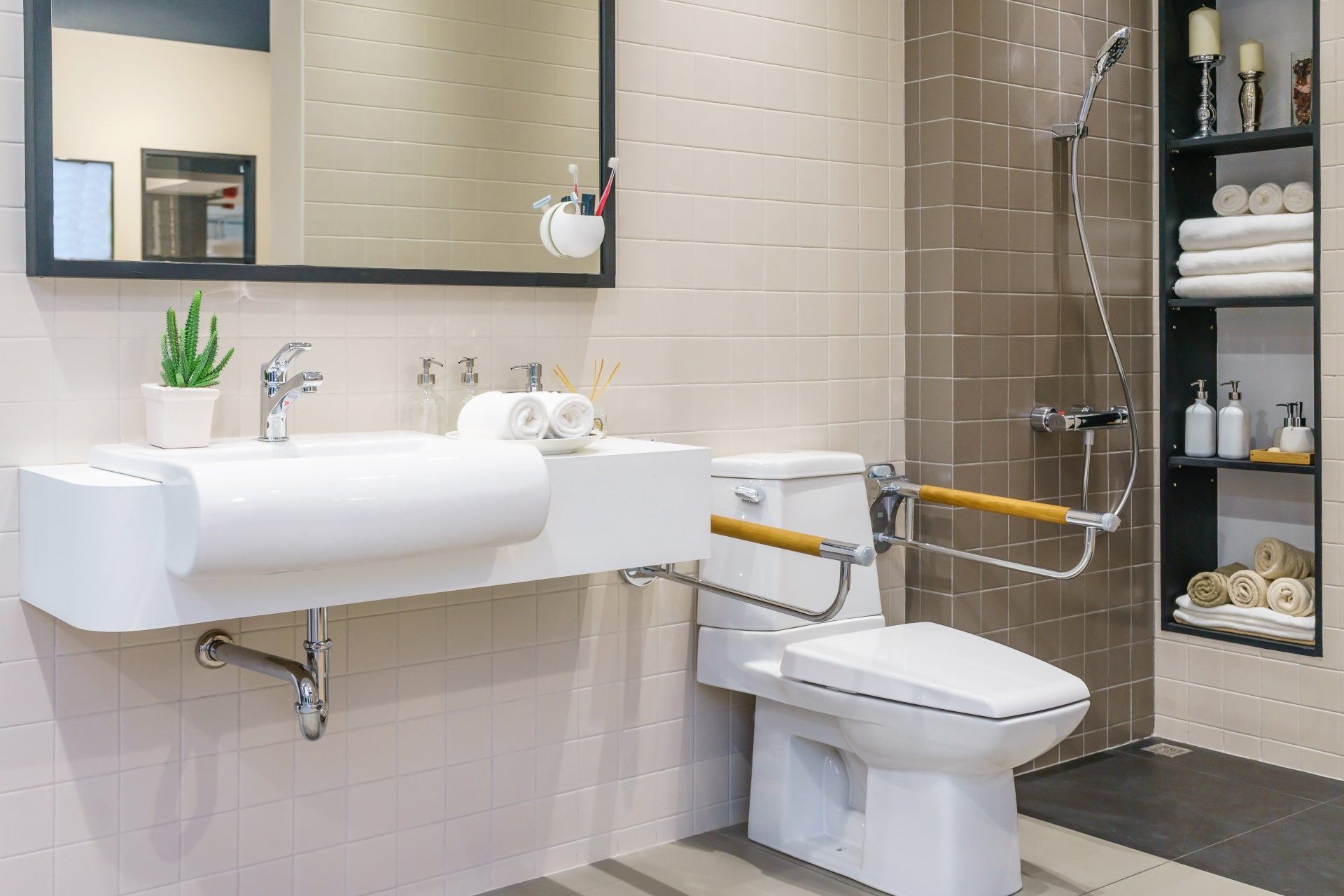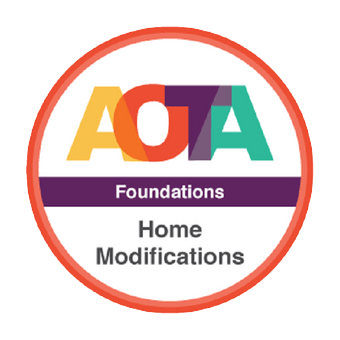Phone: 979-418-7165
Fax: 1-800-419-5153
Home Modification
Angel Leaf Rehab & Consulting strives to maximize your health, well being and quality of life to assist you in aging in place in your home or anywhere you call home. We can provide a comprehensive home safety and accessibility assessment by a licensed occupational or physical therapist. You will receive recommendations specific to your needs that may include home modifications, adaptive equipment to ease activities of daily living, referral for physical therapy evaluation, and/or fall prevention strategies.
Our in-home evaluation includes a 60-90 minute interview and viewing of the home. The specialist and/or therapist will make the appropriate recommendations, review them with the individual and provide a comprehensive report. Angel Leaf Rehab & Consulting does not complete the actual modifications, but can refer you to licensed contractors, if needed.
Why Home Modification?
- You’re getting older and you don’t want to move into a nursing home.
- You live far away and you’re concerned about your loved one’s ability to live alone.
- Your child needs help accessing their environment safely.
- You temporarily need to modify your home environment until you recover from your illness or injury.
- You want your home to be accessible for ALL of your visitors, no matter age or ability.
- You want to increase your strength and ability.
Home Modification
Angel Leaf Rehab & Consulting strives to maximize your health, well being and quality of life to assist you in aging in place in your home or anywhere you call home. We can provide a comprehensive home safety and accessibility assessment by a licensed occupational or physical therapist. You will receive recommendations specific to your needs that may include home modifications, adaptive equipment to ease activities of daily living, referral for physical therapy evaluation, and/or fall prevention strategies.
Our in-home evaluation includes a 60-90 minute interview and viewing of the home. The specialist and/or therapist will make the appropriate recommendations, review them with the individual and provide a comprehensive report. Angel Leaf Rehab & Consulting does not complete the actual modifications, but can refer you to licensed contractors, if needed.

Slide title
Write your caption hereButton
Slide title
Write your caption hereButton
Slide title
Write your caption hereButton
Slide title
Write your caption hereButton
Why Home Modification?
- You’re getting older and you don’t want to move into a nursing home.
- You live far away and you’re concerned about your loved one’s ability to live alone.
- Your child needs help accessing their environment safely.
- You temporarily need to modify your home environment until you recover from your illness or injury.
- You want your home to be accessible for ALL of your visitors, no matter age or ability.
- You want to increase your strength and ability.
The Therapist's Role
- Evaluate the client’s functional abilities within the environment.
- Recommendations for the following based on medical necessity and the client’s functional abilities, diagnosis, and prognosis.
- Home modifications: short-term and long-term recommendations for independence, safety, accessibility that reduce demands on caregivers.
- Design consultation: to ensure floor plans/blueprints meet the short-term and long-term needs of the client and family. Collaborate with a licensed contractor or interior designer about building and design strategies and techniques for creating attractive, barrier-free living spaces.
- Adaptive equipment: to increase safety and function and decrease construction costs.
- Accessible fixtures:
- recommendations and placement of fixtures, such as grab bars and faucets that are functional and look great. Part of being home is feeling like home and not a hospital.
- Follow-up occupational therapy services for training of client and caregiver to ensure safe, efficient, and proper use of adaptive equipment and home modifications.
The Therapist's Role
- Evaluate the client’s functional abilities within the environment.
- Recommendations for the following based on medical necessity and the client’s functional abilities, diagnosis, and prognosis.
- Home modifications: short-term and long-term recommendations for independence, safety, accessibility that reduce demands on caregivers.
- Design consultation: to ensure floor plans/blueprints meet the short-term and long-term needs of the client and family. Collaborate with a licensed contractor or interior designer about building and design strategies and techniques for creating attractive, barrier-free living spaces.
- Adaptive equipment: to increase safety and function and decrease construction costs.
- Accessible fixtures:
- recommendations and placement of fixtures, such as grab bars and faucets that are functional and look great. Part of being home is feeling like home and not a hospital.
- Follow-up occupational therapy services for training of client and caregiver to ensure safe, efficient, and proper use of adaptive equipment and home modifications.
Essential home modifications take into consideration some basic elements:
-
Accessibility
Accessibility: means making doorways wider, clearing spaces to ensure a wheelchair can effectively pass through them, adding ramps or lift devices, addressing countertop heights, and placing light switches, outlets and thermostats at heights that can be easily reached. This kind of remodeling must conform to state and local building codes, ADA guidelines and American National Standards Institute regulations for accessibility.
-
Adaptability
Adaptability: can be competed quickly and easily to accommodate for the needs of seniors or individuals with disabilities. Examples would include adding grab bars at specific points in the bathroom, adding lighting, magnification, and contrast for low vision, and raising the level of beds, chairs, and sofas to allow for safer mobility.
-
Universal Design
Universal Design: means designing interior and exterior spaces to be usable by all people, to the greatest extent possible. Examples might include opening floor plans so that they are easier to navigate for everyone and flexible enough to accommodate for adaptation to special needs and function with a minimum of effort. Elements of universal design can be utilized in modifying and remodeling existing housing.
-
Visibility
Visibility: design or home modifications that make the home able to be lived in or "visitable" by people who have trouble with steps, use wheelchairs or walkers. A home is visitable when it meets three basic requirements:
- zero-step entrance
- doors with 32 inches of clear passage space
- bathroom on the main floor that is wheelchair or walker accessible
Contact Us
Leave us your info and we will get back to you.
Contact Us
We will get back to you as soon as possible
Please try again later




